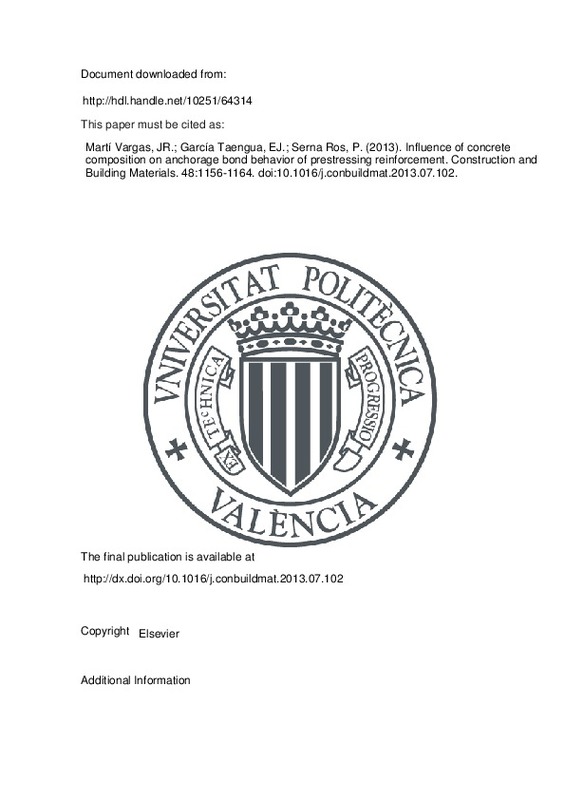JavaScript is disabled for your browser. Some features of this site may not work without it.
Buscar en RiuNet
Listar
Mi cuenta
Estadísticas
Ayuda RiuNet
Admin. UPV
Influence of concrete composition on anchorage bond behavior of prestressing reinforcement
Mostrar el registro completo del ítem
Martí Vargas, JR.; García Taengua, EJ.; Serna Ros, P. (2013). Influence of concrete composition on anchorage bond behavior of prestressing reinforcement. Construction and Building Materials. 48:1156-1164. https://doi.org/10.1016/j.conbuildmat.2013.07.102
Por favor, use este identificador para citar o enlazar este ítem: http://hdl.handle.net/10251/64314
Ficheros en el ítem
Metadatos del ítem
| Título: | Influence of concrete composition on anchorage bond behavior of prestressing reinforcement | |
| Autor: | García Taengua, Emilio José | |
| Entidad UPV: |
|
|
| Fecha difusión: |
|
|
| Resumen: |
An experimental research addressing the effects of concrete composition and strength on anchorage bond behavior of prestressing reinforcement is presented to clarify the effect of material properties that have appeared ...[+]
|
|
| Palabras clave: |
|
|
| Derechos de uso: | Reserva de todos los derechos | |
| Fuente: |
|
|
| DOI: |
|
|
| Editorial: |
|
|
| Versión del editor: | http://dx.doi.org/10.1016/j.conbuildmat.2013.07.102 | |
| Código del Proyecto: |
|
|
| Agradecimientos: |
The content of this article is part of the research that the Institute of Concrete Science and Technology (ICITECH) at Universitat Politecnica de Valencia is currently conducting in conjunction with PREVALESA and ISOCRON. ...[+]
|
|
| Tipo: |
|







![[Cerrado]](/themes/UPV/images/candado.png)


